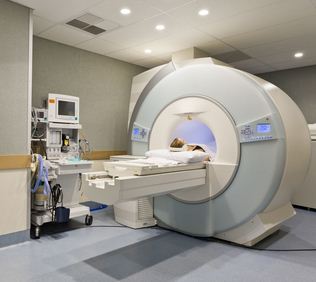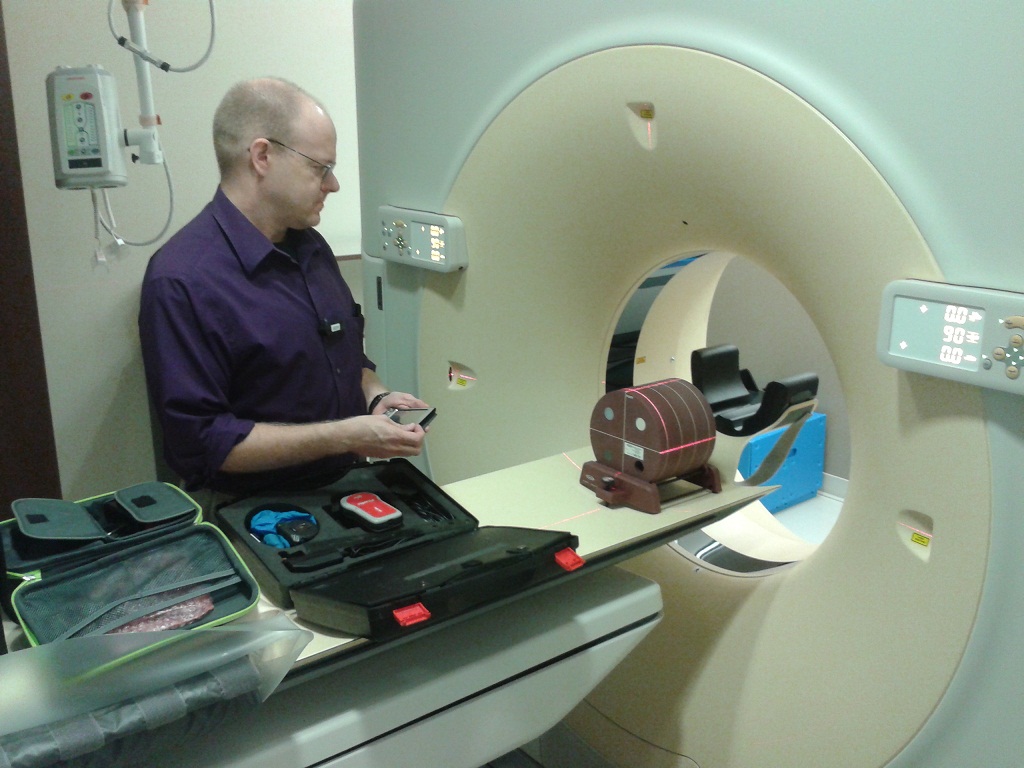It's important to us to keep you informed about changes in medical physics regulations -- and it's also our pleasure to keep you informed as part of our commitment to customer service.
Read our blog often for the latest updates and expert medical physics advice from our skilled team.
The Joint Commission Rescinds Requirements for CT technologist advanced level certification
Posted on Monday, June 27th, 2016, under CT

By Stephen Hale, Jr., Ph. D.
The Joint Commission has released an update to the Standards for Diagnostic Imaging Services.
Two new Human Resources (HR) elements of performance (EP) for accredited hospitals, critical access hospitals, and ambulatory care organizations that provide diagnostic imaging services were originally announced in March 2016. They were to become effective on September 1st of 2016. Both were targeted towards those performing computed tomography, or CT, exams.
After these new EPs were announced, feedback to the Joint Commission expressed concern about the ability to comply with the new requirements by the original required date of January 1st, 2018, particularly in rural and critical access hospitals.
The first new EP, Standard HR.01.02.05, EP #19, included a note that stated that CT technologists would be expected to obtain advanced level CT certification by January 1st, 2018. This note has been deleted in its entirety.
The remainder of this EP will still be in effect, requiring an alternative set of qualifications of CT technologists. The following are allowed:
- State licensure permitting the performance of diagnostic CT exams and documented training on the provision of CT exams, or
- Registration and certification in radiography by the American Registry of Radiology Technologists (ARRS) and documented training on the provision of CT exams, or
- Certification in nuclear medicine technology by ARRT or the Nuclear Medicine Technology Certification Board (NMTCT) and documented training on the provision of CT exams.
The second new EP, Standard HR.01.05.03, EP #26, required that CT technologists would participate in education that would prepare them to achieve the advanced level CT certification by January 1st, 2018. This EP has been suspended.
Integrated Science Support seeks to keep our clients updated on any regulation changes that can impact their business. We provide qualified expert services in Missouri, Kansas, and Iowa. Contact us today to find out how we can help you maintain regulatory compliance as well as achieve excellent patient care in the diagnostic field.
What Can We Say About Patient Dose in CT Exams?
Posted on Tuesday, April 2nd, 2013, under CT

By Stephen E. Hale Jr., Ph.D.
Radiation dose from Computed Tomography (CT) exams has recently become a hot topic among the medical community, the legal community, and the public in general. Overdoses from brain perfusion studies at several medical facilities in California and Alabama have contributed to this rise in concern. But what can a CT technologist or radiologist actually tell their patients about the amount of radiation administered during a CT exam?
Each CT machine will typically provide both an estimated CTDIvol and DLP value before an exam is conducted. CTDIvol stands for volume Computed Tomography Dose Index, while DLP stands for Dose-Length Product. Neither of these is actually a measure of the dose a patient will get from the exam. They are actually designed as metrics for comparing one protocol to another, one machine to another, or even one facility to another, in terms of the amount of radiation produced by the system. As such, they can be used to guide adjustments to the techniques of a given protocol, such as kVp, mA, rotation time, mAs, or even pitch for helical scans.
Dose is defined as the amount of energy absorbed from radiation passing through material divided by the amount of mass that is actually absorbing the energy. The more energy absorbed in the same amount of matter, such as a patient’s body, the more dose is absorbed, and therefore the greater potential for damage. Similarly, the same amount of energy absorbed in a smaller body will also result in a greater potential for damage.
The CT machine has no knowledge about the patient who will be scanned nor what portion of the patient’s anatomy will be examined. If a large patient is scanned with the same techniques as a small patient, the smaller patient will have less mass exposed to the same amount of radiation, and thus experience a higher dose. Different portions of our bodies are more sensitive to radiation than others. Thus having a CT exam with a set of technique factors over a patient’s feet will have much less detriment to the patient than the same exam over a patient’s head.
A good analogy to this situation is that of a tachometer in a car relative to the car’s speed. The tachometer displays how many revolutions per minute the engine is spinning the crankshaft, but it has no knowledge about the gear selected by the transmission or the size of the wheels and tires on the car. For a given RPM, a higher gear means a faster speed. Similarly, if the wheels and tires are replaced with a larger set, a given RPM of the engine and the same gear will result in a faster speed. The CTDIvol and DLP values are the equivalent of the tachometer, reporting how the CT machine is performing. But without information about the patient undergoing the procedure, nothing can be said about the dose absorbed.
Without knowledge of the patient’s size or the anatomy being scanned by the CT, it is not possible to tell the patient how their radiation dose compares to other sources or exams. With images of the patients and information about the parameters of the exam on the CT system, physicists can calculate actual radiation doses to patients. This is one of the many services provided by Integrated Science Support, Inc.
References:
- “Two more hospitals report CT scan radiation overdoses” LA Times, Online 8/3/2010